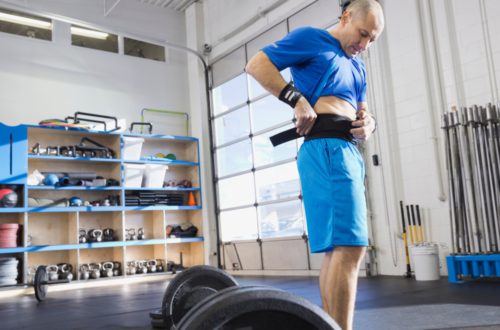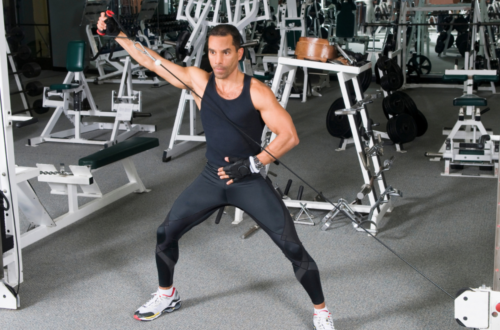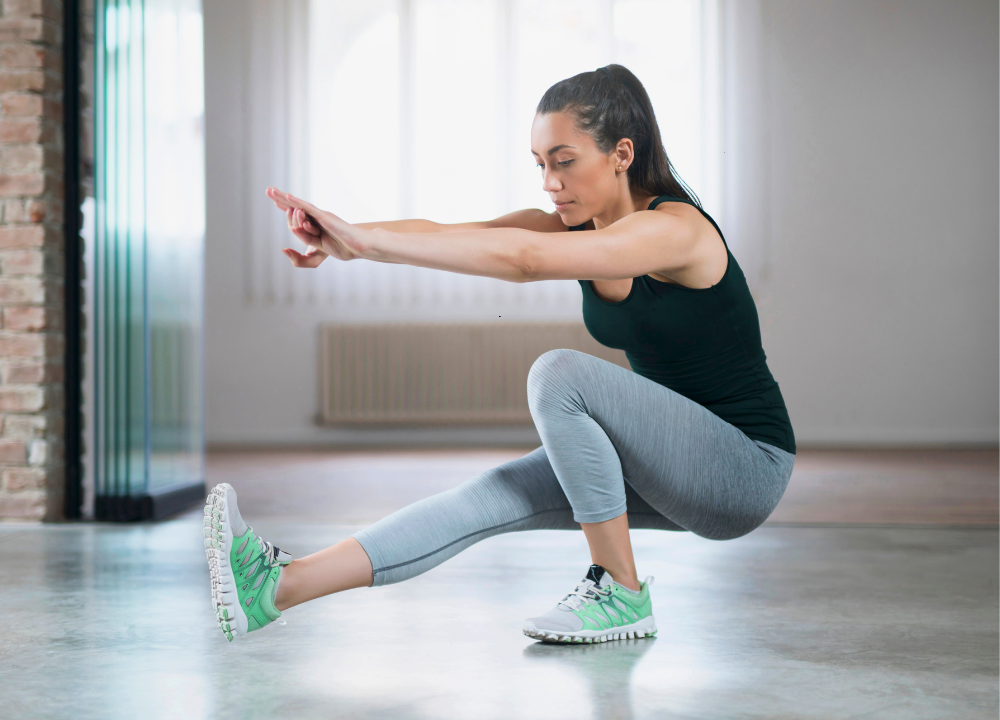
Cossack Squat Variations: Goblet, Landmine & Weighted Options
Goblet, Landmine, and Weighted Cossack Squat variations offer unique ways to enhance strength, flexibility, and balance. These exercises target your legs, hips, and core.
Table of Contents
What Is The Cossack Squat?
The Cossack Squat is a versatile exercise that challenges your lower body strength, balance, and mobility. This squat variation involves shifting your weight laterally from one leg to another while squatting deeply on one side. Named after the traditional dance of the Cossack warriors, this exercise is a fantastic addition to any workout routine.
Benefits Of Incorporating Cossack Squats In Your Routine
Adding Cossack Squats to your fitness regimen offers numerous advantages:
- Improved flexibility and mobility: This squat variation stretches your inner thighs, hips, and ankles.
- Enhanced balance and stability: Shifting your weight laterally improves coordination and stability.
- Strength gains: Targets multiple muscle groups, increasing overall lower body strength.
- Functional movement: Mimics real-life movements, improving your functional fitness.
Here’s a quick comparison of the benefits of different Cossack Squat variations:
| Variation | Benefits |
|---|---|
| Goblet Cossack Squat | Improves upper body strength and core stability while enhancing lower body flexibility. |
| Landmine Cossack Squat | Provides added resistance and stability, making it easier to maintain proper form. |
| Weighted Cossack Squat | Increases intensity and muscle engagement, leading to greater strength gains. |
What Muscles Are Working With Cossack Squat
The Cossack Squat is a compound movement that engages multiple muscle groups:
- Quadriceps: Primary muscle group activated during the squat phase.
- Hamstrings: Engaged during the descent and ascent phases for added stability.
- Glutes: Activated to help push the body back to the standing position.
- Adductors: Stretched and strengthened, especially during the deep squat position.
- Core muscles: Engaged to maintain balance and proper form throughout the movement.
- Calves: Provide support and stability during the lateral shift and squat.
Bodyweight Cossack Squat: The Foundation
Whether you are exploring Goblet, Landmine, or Weighted options, the Bodyweight Cossack Squat is the foundation. Mastering this movement sets the stage for more advanced versions, helping you build strength, balance, and flexibility.
How To Perform The Bodyweight Cossack Squat Correctly
To get the most out of the Bodyweight Cossack Squat, follow these steps:
- Stand with your feet wide apart, about 1.5 times your shoulder width.
- Point your toes slightly outward to open up your hips.
- Shift your weight to your left leg while bending your left knee.
- Keep your right leg straight and your right foot flat or with the heel slightly raised.
- Lower your hips towards the ground as far as your mobility allows.
- Maintain an upright torso throughout the movement.
- Push through your left heel to return to the starting position.
- Repeat on the other side, shifting your weight to your right leg.
Remember to keep your core engaged and avoid letting your knees cave inward.
Cossack Squat For Beginners
Starting with the Bodyweight Cossack Squat can be challenging for beginners. Here are some tips to make it easier:
- Use a support like a chair or wall to help with balance.
- Focus on form rather than depth. It’s better to perform a shallow squat correctly than a deep one incorrectly.
- Stretch regularly to improve your hip and ankle mobility.
- Start with fewer reps, such as 3-5 per side, and gradually increase as you get stronger.
Here is a simple beginner’s progression plan:
| Week | Reps per side | Sets |
|---|---|---|
| 1 | 3 | 2 |
| 2 | 4 | 2 |
| 3 | 5 | 3 |
| 4 | 6 | 3 |
By following this plan, you’ll gradually build the strength and mobility needed for advanced variations.
Common Mistakes To Avoid With Bodyweight Cossack Squats
Avoiding common mistakes ensures you get the most out of your workout:
- Not warming up: Always warm up your muscles before starting to prevent injuries.
- Knee alignment: Ensure your knees track over your toes to avoid strain.
- Incorrect foot placement: Feet too close or too wide can affect your balance and form.
- Leaning forward: Keep your torso upright to engage your core effectively.
- Ignoring flexibility: Work on your hip and ankle mobility to improve your squat depth.
- Rushing the movement: Perform each rep slowly and with control.
Here’s a quick checklist to avoid these mistakes:
- Warm up with dynamic stretches.
- Check your knee alignment in a mirror.
- Adjust your foot placement as needed.
- Engage your core and keep your chest up.
- Include flexibility exercises in your routine.
- Slow down and focus on each rep.
By avoiding these common mistakes, you’ll improve your technique and get better results from your Bodyweight Cossack Squats.
Goblet Cossack Squat: Adding A Kettlebell
The Goblet Cossack Squat, in particular, involves adding a kettlebell, making it an excellent choice for enhancing both strength and mobility. By incorporating a kettlebell, you not only increase the intensity but also improve your balance and stability.
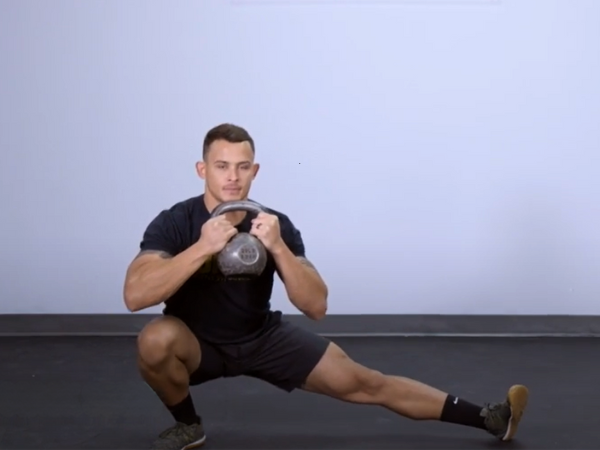
How To Perform The Goblet Cossack Squat
To perform the Goblet Cossack Squat, follow these steps:
- Start by standing with your feet wider than shoulder-width apart.
- Hold a kettlebell close to your chest with both hands, gripping it by the horns.
- Engage your core and keep your chest up.
- Shift your weight onto your right leg, bending your knee as you lower your hips.
- Keep your left leg straight and your left foot flat or with the toes pointing up.
- Lower yourself as far as your mobility allows while keeping the kettlebell close to your chest.
- Push through your right foot to return to the starting position.
- Repeat on the left side.
Here’s a quick reference table:
| Step | Action |
|---|---|
| 1 | Stand with feet wide |
| 2 | Hold kettlebell at chest |
| 3 | Engage core, keep chest up |
| 4 | Shift weight onto one leg |
| 5 | Lower hips, keeping other leg straight |
| 6 | Push through foot to return |
| 7 | Repeat on the opposite side |
Why Use A Kettlebell For Cossack Squats?
Using a kettlebell in your Cossack Squats offers several advantages:
- Increased Resistance: A kettlebell adds resistance, making the exercise more challenging and effective.
- Improved Balance: Holding a kettlebell helps enhance your balance as you perform the squat.
- Better Core Engagement: The kettlebell forces you to engage your core muscles more effectively.
- Enhanced Grip Strength: Holding the kettlebell improves your grip strength over time.
These benefits make the kettlebell a valuable tool in your fitness routine. The added weight also helps in building muscle mass and improving overall strength. Using a kettlebell can also correct imbalances in your lower body muscles. It’s a simple yet effective way to elevate your Cossack Squats.
Benefits Of The Goblet Cossack Squat For Mobility And Strength
The Goblet Cossack Squat offers multiple benefits for both mobility and strength:
- Enhanced Hip Mobility: The wide stance and deep squat position improve hip flexibility.
- Increased Lower Body Strength: This squat variation targets the quads, hamstrings, and glutes.
- Better Balance and Stability: The added weight of the kettlebell helps improve your balance.
- Improved Core Strength: Holding the kettlebell engages your core muscles.
- Functional Movement: Mimics natural movements, making it a functional exercise.
Incorporating the Goblet Cossack Squat into your routine can significantly enhance your athletic performance. It is also beneficial for activities that require lower body strength and flexibility. The exercise is not only effective but also adds variety to your workouts, keeping them interesting and challenging.
Landmine Cossack Squat: Enhanced Stability & Control
The Landmine Cossack Squat is especially beneficial for enhanced stability and control. This variation uses a landmine setup to help maintain balance, making it ideal for beginners and those looking to improve their form.
How To Set Up And Perform The Landmine Cossack Squat
Setting up the Landmine Cossack Squat correctly is crucial for safety and effectiveness. Follow these steps to get started:
- Step 1: Secure the barbell in a landmine attachment.
- Step 2: Stand with your feet wider than shoulder-width apart, holding the barbell close to your chest.
- Step 3: Shift your weight to one leg while keeping the other leg straight.
- Step 4: Squat down on the bent leg, keeping your chest upright and core engaged.
- Step 5: Push through the heel of the bent leg to return to the starting position.
Ensure you keep your back straight and avoid leaning forward. The landmine attachment provides a fixed path, enhancing your stability and control throughout the movement.
Advantages Of The Landmine Variation For Beginners
The Landmine Cossack Squat offers several advantages for beginners:
- Enhanced Stability: The landmine setup offers a fixed path, reducing the risk of imbalance.
- Better Control: Holding the barbell close to your chest helps maintain a steady form.
- Safe Progression: The fixed path allows for safer progression as you build strength and flexibility.
A table highlighting these advantages can be helpful:
| Advantage | Description |
|---|---|
| Enhanced Stability | Fixed path reduces imbalance. |
| Better Control | Holding barbell close to chest aids form. |
| Safe Progression | Allows safer strength and flexibility development. |
Incorporating the Landmine Cossack Squat into your routine can build a strong foundation for more advanced squat variations.
Cossack Squat With Dumbbell: Increasing The Challenge
Introducing weights like dumbbells increases the challenge, engaging muscles more intensely. The Cossack squat with a dumbbell is a great way to step up your workout routine.
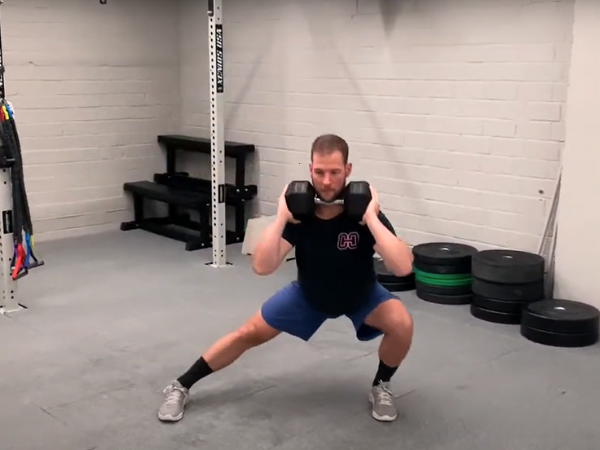
How To Perform The Cossack Squat With Dumbbells
Performing the Cossack squat with dumbbells can be an effective way to amplify the intensity of your workout. Follow these steps to perform the exercise correctly:
- Start Position: Stand with your feet wider than shoulder-width apart, holding a dumbbell in each hand.
- Hold the Dumbbells: Keep your arms extended straight down in front of you, with a firm grip on the dumbbells.
- Initiate the Movement: Shift your weight onto your right leg, bending your right knee while keeping your left leg straight.
- Squat Down: Lower your hips as if sitting back into a chair, ensuring your right knee stays aligned with your toes.
- Maintain Form: Keep your back straight and chest up throughout the movement.
- Return to Start: Push through your right heel to return to the starting position, then repeat on the left side.
Repeat for the desired number of repetitions, ensuring proper form is maintained throughout the exercise.
| Step | Description |
|---|---|
| 1 | Stand with feet wide, holding dumbbells. |
| 2 | Shift weight to one leg and bend the knee. |
| 3 | Lower hips, keeping the other leg straight. |
| 4 | Push through the heel to return to start. |
Tips For Holding And Using Dumbbells Effectively
Using dumbbells can significantly enhance the effectiveness of the Cossack squat. Here are some tips for holding and using them effectively:
- Choose the Right Weight: Start with lighter dumbbells to master the form before progressing to heavier weights.
- Maintain a Firm Grip: Hold the dumbbells firmly to prevent them from slipping during the exercise.
- Positioning: Keep the dumbbells close to your body, with arms extended straight down to maintain balance.
- Engage Your Core: Activate your core muscles to help stabilize your body and protect your lower back.
- Avoid Overstraining: Ensure the weight you choose allows you to perform the exercise without compromising form.
- Breathing: Inhale as you lower into the squat and exhale as you push back up to the starting position.
Remember, the key to an effective workout is not just the weight but also the form. Focus on maintaining proper alignment and control throughout each repetition to maximize the benefits and reduce the risk of injury.
Cossack Squat With Barbell: Advanced Strength Training
One of the most advanced forms is the Cossack Squat with a barbell. This variation demands strength, balance, and mobility, making it perfect for experienced lifters looking to push their limits.
How To Safely Perform The Barbell Cossack Squat
Executing the barbell Cossack squat safely is crucial to avoid injuries. Follow these steps to perform the exercise correctly:
- Warm-Up: Start with a thorough warm-up. Focus on hip, knee, and ankle mobility exercises.
- Set-Up: Place the barbell on your upper back, just like in a back squat. Grip the bar firmly with both hands.
- Stance: Stand with your feet wider than shoulder-width apart. Your toes should point slightly outward.
- Lowering Phase: Shift your weight onto one leg. Slowly bend the knee of the working leg while keeping the other leg straight.
- Depth: Lower your hips as far as you can while maintaining balance. Keep your chest up and core tight.
- Return: Push through your heel to return to the starting position. Repeat on the other side.
Remember to keep your movements controlled. Rushing through the exercise can lead to poor form and potential injury.
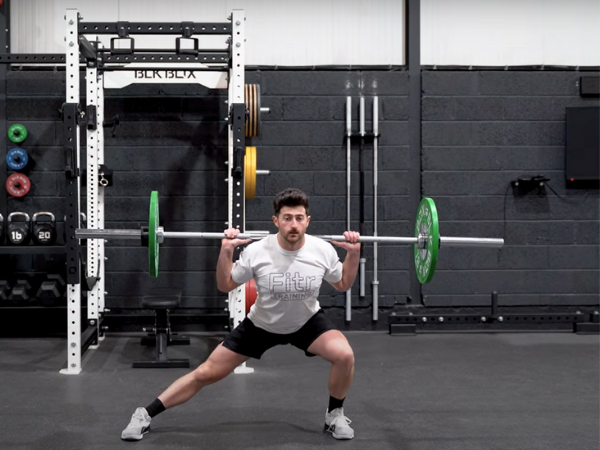
Benefits Of The Barbell Variation For Experienced Lifters
The barbell Cossack squat offers several benefits for seasoned athletes:
- Increased Strength: Adding a barbell significantly increases the resistance, helping to build more muscle and strength in the lower body.
- Improved Balance: Balancing a barbell while performing the squat improves proprioception and stability.
- Enhanced Mobility: This variation stretches the inner thigh and groin muscles, improving flexibility and range of motion.
- Symmetry and Coordination: Working each leg individually helps correct imbalances, leading to better overall coordination.
Integrating the barbell Cossack squat into your routine can lead to notable improvements in strength and performance.
Precautions To Take With Heavier Weights
Using heavier weights can be risky if not done correctly. Here are some precautions to ensure safety:
- Proper Form: Never compromise form. Maintaining proper alignment reduces the risk of injury.
- Gradual Progression: Increase the weight gradually. Start with lighter weights and add increments over time.
- Spotter: Use a spotter for added safety, especially when attempting new personal records.
- Equipment: Ensure your barbell and weights are in good condition. Faulty equipment can lead to accidents.
- Listen to Your Body: Pay attention to any pain or discomfort. Stop immediately if something feels off.
By following these precautions, you can safely incorporate the barbell Cossack squat into your strength training regimen.
Progressions And Tips For Mastering Cossack Squats
Variations like Goblet, Landmine, and Weighted Cossack squats each offer unique benefits. Mastering these variations requires a structured approach. Let’s explore some progressions and tips for perfecting your Cossack squats.
How To Gradually Increase Weight And Difficulty
Start with bodyweight Cossack squats to build a solid foundation. Focus on perfecting your form before adding any weight. Once you’re comfortable, you can begin to incorporate weights.
- Goblet Cossack Squats: Hold a dumbbell or kettlebell close to your chest. This helps maintain balance and adds resistance.
- Landmine Cossack Squats: Position a barbell in a landmine attachment. Hold the end of the barbell with both hands and perform the squat. This variation adds a unique angle of resistance.
- Weighted Cossack Squats: Use a barbell or dumbbells. Start with lighter weights and progressively increase the load as your strength improves.
Increase the difficulty by adjusting the following:
- Depth: Lower your hips closer to the ground.
- Speed: Perform the movement slowly to increase time under tension.
- Reps and Sets: Increase the number of reps and sets gradually.
Mobility And Flexibility Drills To Complement Your Cossack Squats
Good mobility and flexibility are crucial for performing Cossack squats effectively. Incorporate the following drills into your routine to enhance your performance:
- Hip Flexor Stretch: Kneel on one knee, push your hips forward, and hold for 30 seconds. Repeat on the other side.
- Hamstring Stretch: Sit on the ground with one leg extended. Reach for your toes and hold for 30 seconds. Switch legs and repeat.
- Adductor Stretch: Sit with your feet together and knees bent. Push your knees down gently with your elbows and hold for 30 seconds.
- Dynamic Lunges: Step forward into a lunge position, hold for a few seconds, and return to the starting position. Alternate legs.
Implementing these stretches will improve your range of motion. Aim to perform these drills daily to see the best results.



